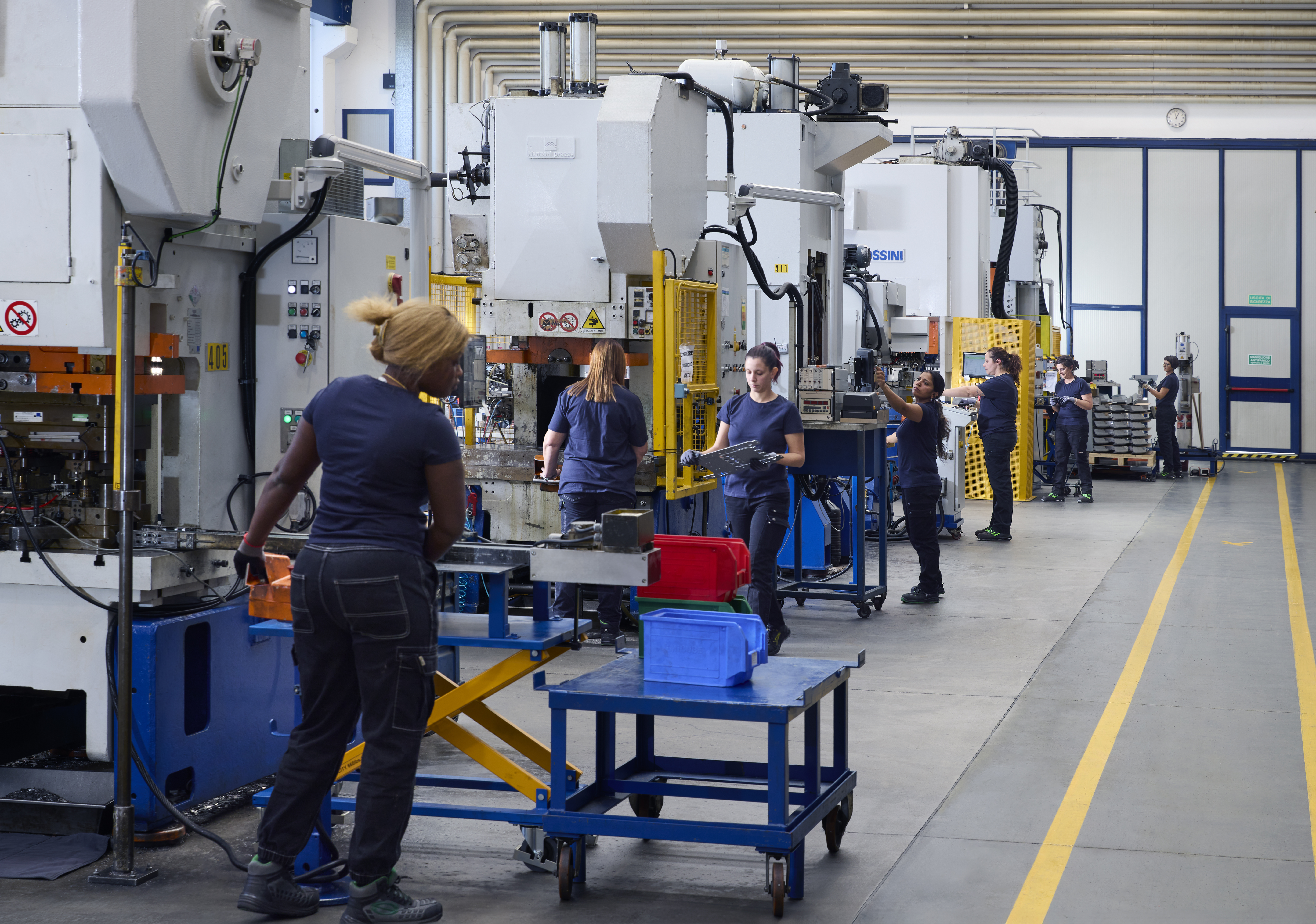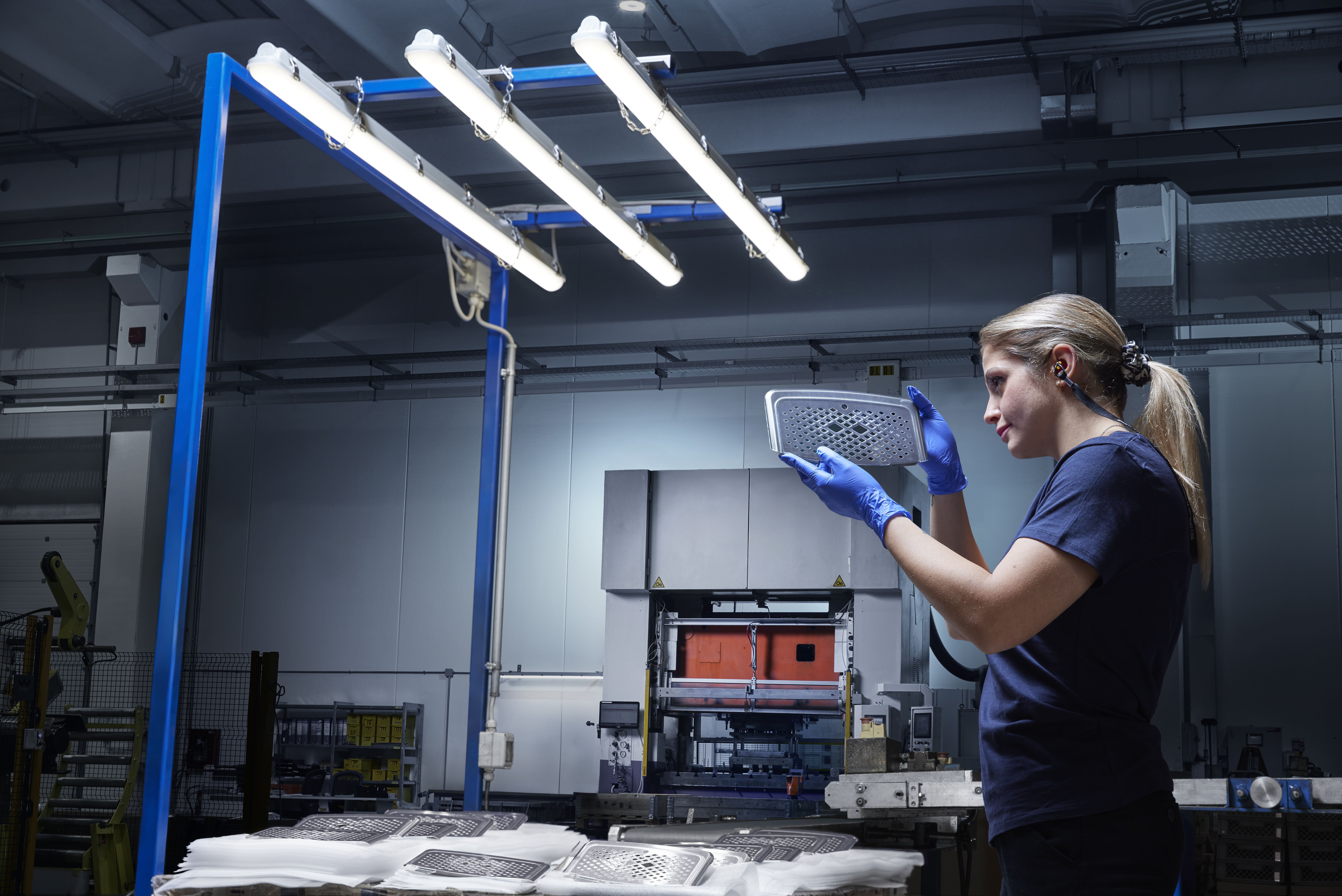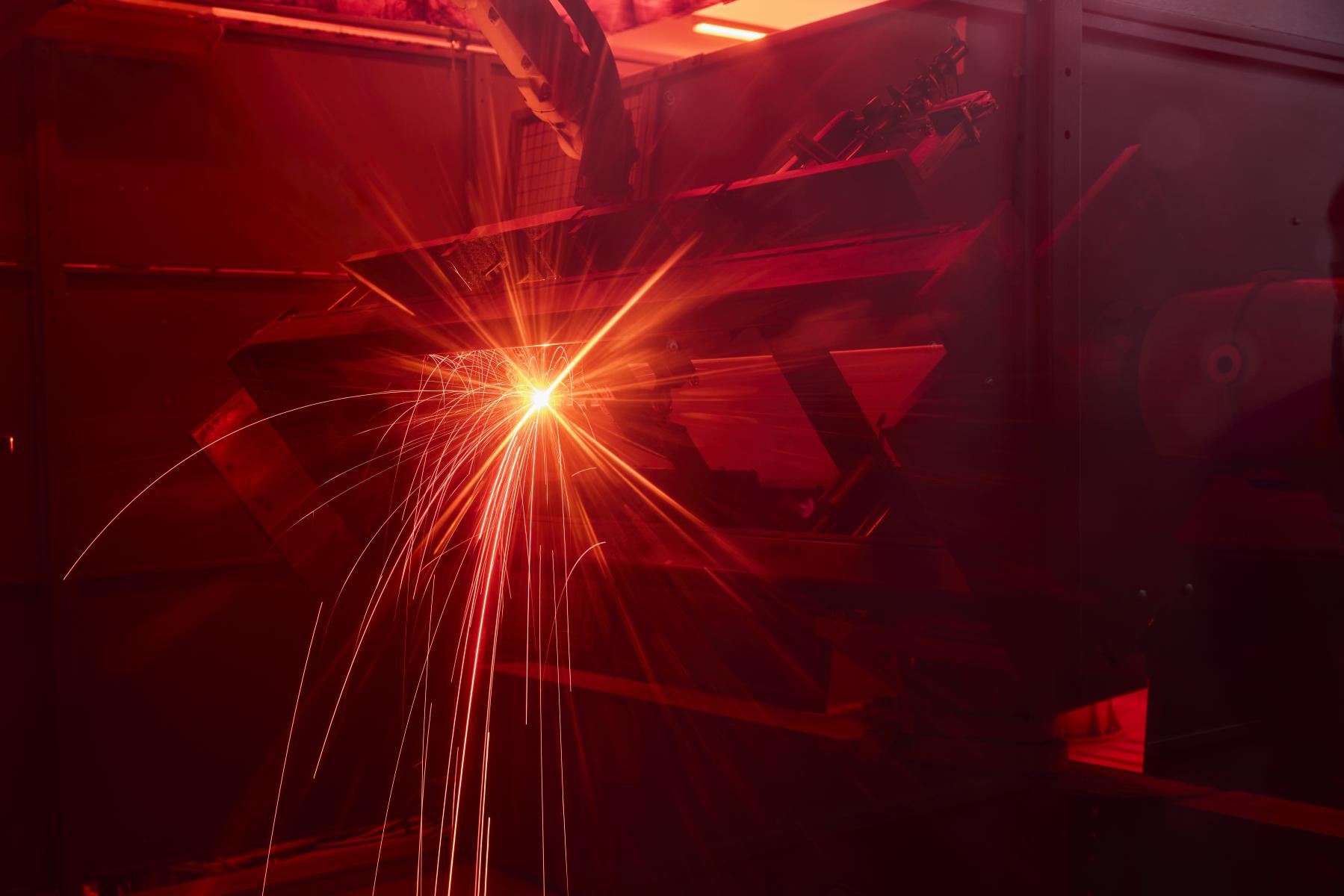Breadcrumb
Aluminium surface treatments: how to improve the resistance
Minifaber performs a variety of aluminium surface treatments to make it more resistant and aesthetically suitable for its final purpose. Find out all the types of processing available, how they are done and what purpose they are suitable for.

Aluminium is a malleable silver metal extracted mainly from bauxite ore. It is known for its softness, lightness and resistance to oxidation, thanks to the development of a very thin layer of oxide that prevents oxygen from corroding the underlying metal. Minifaber is able to process aluminium through different processes, such as punching, shearing, bending, stamping, cutting and welding. Once the semi-finished aluminium piece is realized, it can be delivered to the custom or submitted to surface treatments to make it more resistant or give it a particular appearance.
Discover the main aluminium surface treatments, how they are made and for what purpose:
- What are the aluminium surface treatments:
- Aesthetic surface treatments;
- The advantages in choosing Minifaber.
Surface treatments to increase the aluminium resistance
Aluminium is used in many industries to manufacture millions of different products, and is an extremely important material for the global economy. It is particularly well suited in industries where lightweight, durable, and strong materials are essential, such as transportation, construction, aerospace, automotive, and home appliances.
Once it is processed, aluminium can be submitted to specific surface treatments, to make it more resistant to the external elements or to give it an aesthetic appearance (coloring, glossiness, etc.) more similar to the use that will be made of it. Let's take a look at the treatments that can be requested from Minifaber.
Read also: Aluminum processing: the benefits of cold working
Aluminium anodizing
Anodizing, also called anodic oxidation, is a galvanic process. During this surface treatment, a layer of aluminum oxide is produced on the surface of the aluminium that protects the lower layers, preventing corrosive agents (such as chemicals or gasses) from penetrating into the heart of the metal. The aluminium anodizing surface treatment consists of 3 phases: the actual anodizing phase, the rinsing phase and the final fixing phase.

Aluminium peening
In the surface treatment of peening a powerful spherical or cylindrical jet of abrasive material (the type of material varies according to that of the piece being treated) is delivered to the surface of the aluminium, deforming it slightly. This deformation increases the fatigue resistance and makes the surface more uniform.
Metal electro-polishing
Electro-polishing consists in completely removing the most superficial layer of aluminium, the first to be affected by corrosive elements, but also by bacteria. This makes aluminium more resistant to corrosion and abrasion, easier to maintain and more hygienic.
Aluminium painting: cataphoresis – powdering
In the aluminium surface treatment of painting and powder coating, an epoxy resin coating is applied to increase the corrosion resistance of the metal. With the aluminium powder coating process, the surface is protected against corrosion and chemicals.
The treatment consists, through the effect of an electrostatic field, in depositing on the piece thermosetting resins which are then melted and polymerized in special ovens, in order to create a protective layer. The coating can be applied in several layers to increase its resistance to discoloration, scratches or chipping.

Galvanizing and zinc plating
Zinc plating and nickel plating treatments increase the resistance of aluminium. In the first case the piece of metal is immersed in a bath of zinc, in the second case of nickel.
Decorative aluminium surface treatments
Some aluminium surface treatments are specifically designed for decorative purposes, to improve or modify the aesthetic appearance of the metal. Let's see which ones Minifaber can perform.
Polishing
Polishing treatment is used to give aluminium a shiny and smooth appearance. This process is particularly suitable for making finished products in a variety of industries, including furniture, household appliances, automotive, and so on.
Aluminium sanding
Very similar to peening, sanding treatment differs only in that it is done with a jet of sand and air. The purpose is to smooth out uneven areas, removing residue, impurities or scale.
Metal chrome plating
In chrome plating, the aluminum piece is immersed in an electrolytic bath that prevents passivation (the corrosion of the surface layer) and protects the metal from substances present in the atmosphere. In this case, the functionality is complementary to the aesthetic appearance, because it ensures a more pleasant look to the metal while protecting it.

Why choose Minifaber for aluminium surface treatment
At Minifaber we carry out sheet metal finishes following processing, to achieve the result required by the customer. Our fleet of machines and the skills of our technical team allow us to offer all the main surface operations to make aluminium more resistant: anodizing, peening, electro-polishing, powdering, nickel plating and galvanizing.
We also offer specific decorative treatments: polishing, sanding and chrome plating. Our strength is flexibility, because we can meet any request, with production staggered in several tranches, both for large quantities and for small quantities of pieces. We can supply semi-finished aluminum pieces or finished products, complex and already assembled.


